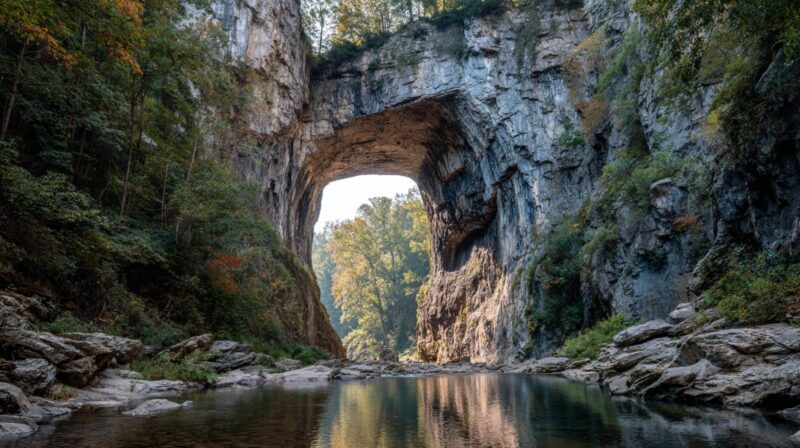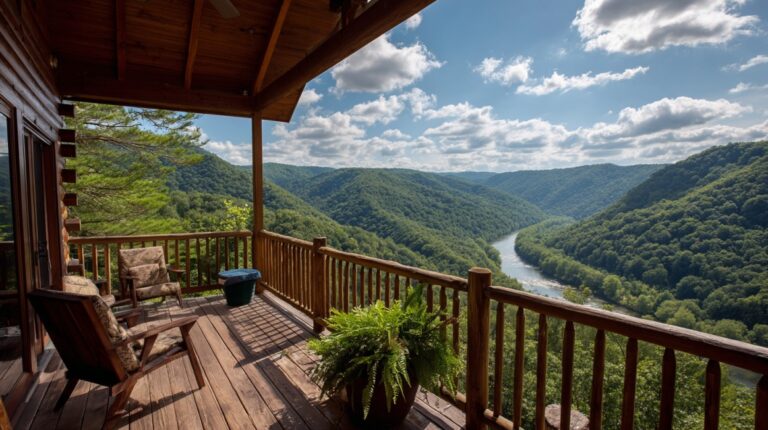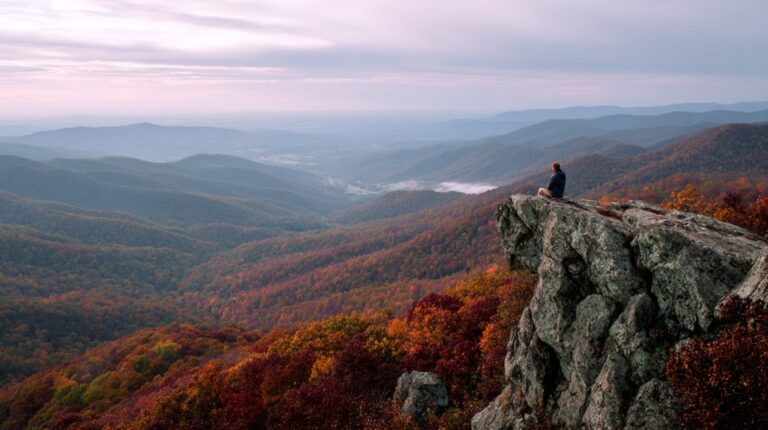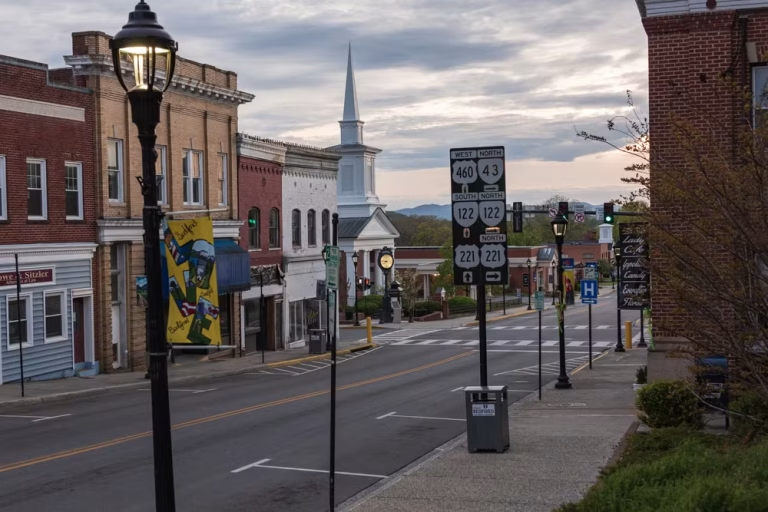Natural Bridge in Virginia has fascinated visitors for centuries as one of the tallest natural arches in North America.
Situated within Natural Bridge State Park, it rises 215 feet and spans 90 feet across Cedar Creek, creating a dramatic stone arc.
For generations, Native tribes, colonial leaders, and travelers have revered it as both a geological wonder and a site of cultural meaning.
It has earned recognition as a National Historic Landmark, standing as a connection between natural grandeur and centuries of human history.
Table of Contents
ToggleGeological Origins
Natural Bridge’s formation is the result of a dramatic interplay between water, stone, and time. Its existence today is tied to the slow erosion of limestone by Cedar Creek, which once flowed entirely underground.
Over thousands of years, nature’s forces reshaped what began as a hidden cavern into an open-air arch of monumental size.
What began as an underground network of limestone passages was carved gradually by the ceaseless movement of water. Eventually, weaker portions of the cave’s ceiling collapsed, leaving only the most durable span intact. That remnant became the massive stone arch visitors see today.
The region belongs to a karst environment, characterized by soluble rock layers and distinctive features shaped over millennia.
- Height of approximately 215 feet with a width of about 90 feet
- Formation linked to the collapse of an ancient cave roof
- Composition dominated by limestone subject to dissolution by slightly acidic water
- Proximity to other karst features such as sinkholes and underground springs
Water infiltration carried away mineral particles bit by bit, widening subterranean chambers until the weight above could no longer hold. When the final collapse occurred, the surviving section resisted erosion, preserving a rare and colossal natural arch.
Nearby terrain shows smaller erosional remnants, but none match its magnitude or enduring stability.
Indigenous Significance
Centuries before European contact, the Monacan Indian Tribe held Natural Bridge in sacred regard. Its towering stone arc was more than a physical crossing; it was a symbol woven into the tribe’s history and spiritual life.
According to oral traditions, the Monacan people once faced a moment of great peril. During that crisis, the arch served as a miraculous crossing over Cedar Creek, offering both safety and deliverance.
Known as the “Great Path,” it became a vital part of their seasonal travel routes and ceremonial practices.
- Spiritual connection rooted in stories of divine intervention
- Role as a practical crossing during hunting and migration seasons
- Venue for rituals, gatherings, and tribal meetings
- Enduring symbol within Monacan cultural heritage today
Ceremonial activities beneath the bridge’s shadow likely reinforced its place as a sacred space, where the physical and spiritual worlds intertwined.
That reverence has endured into modern times, with the Monacan people continuing to honor its presence and historical meaning.
View this post on Instagram
A post shared by JORDYN VERZERA & JT MOCARSKI | Best in the US (@themobilehomie)
Colonial and Founding Fathers’ Era
Early American history left its mark on Natural Bridge through the involvement of two of the nation’s most celebrated figures.
Their connections to the site helped elevate its profile among settlers and visitors during the colonial period and early republic.
George Washington
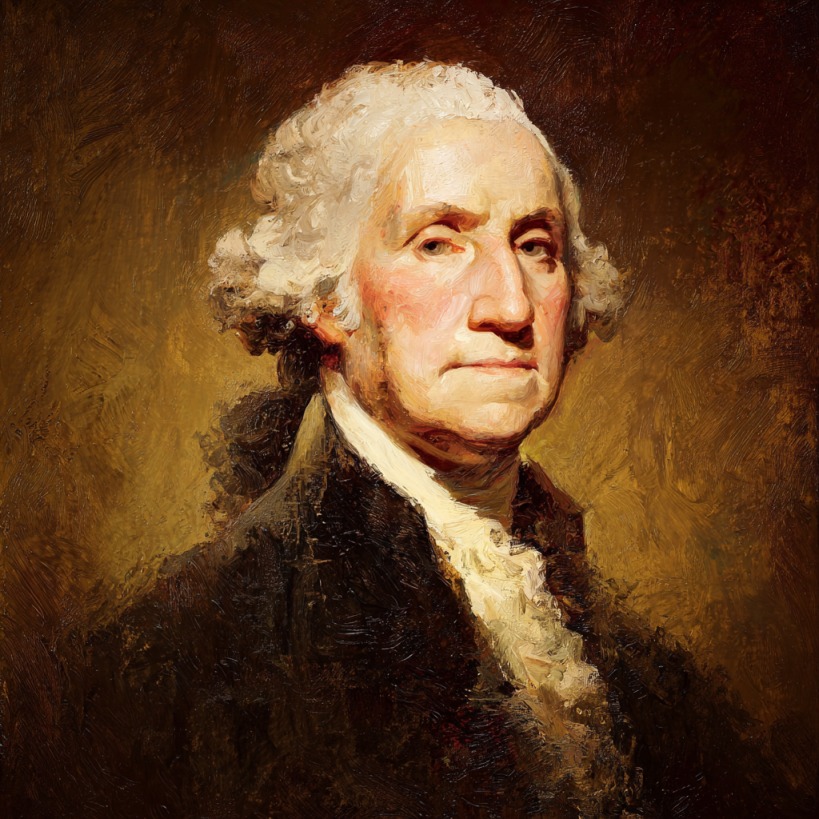
In 1750, George Washington, then a young land surveyor, visited the area while mapping the region.
Stories passed down through generations claim that he carved the initials “G.W.” into the stone wall of the bridge, a detail still pointed out to visitors.
That early association added a sense of historical intrigue and connected the site to Washington’s formative years before his military and political leadership.
- Surveyed the area as part of professional duties in 1750
- Allegedly carved his initials into the rock face
- Added prestige to the site through his presence and work
Thomas Jefferson
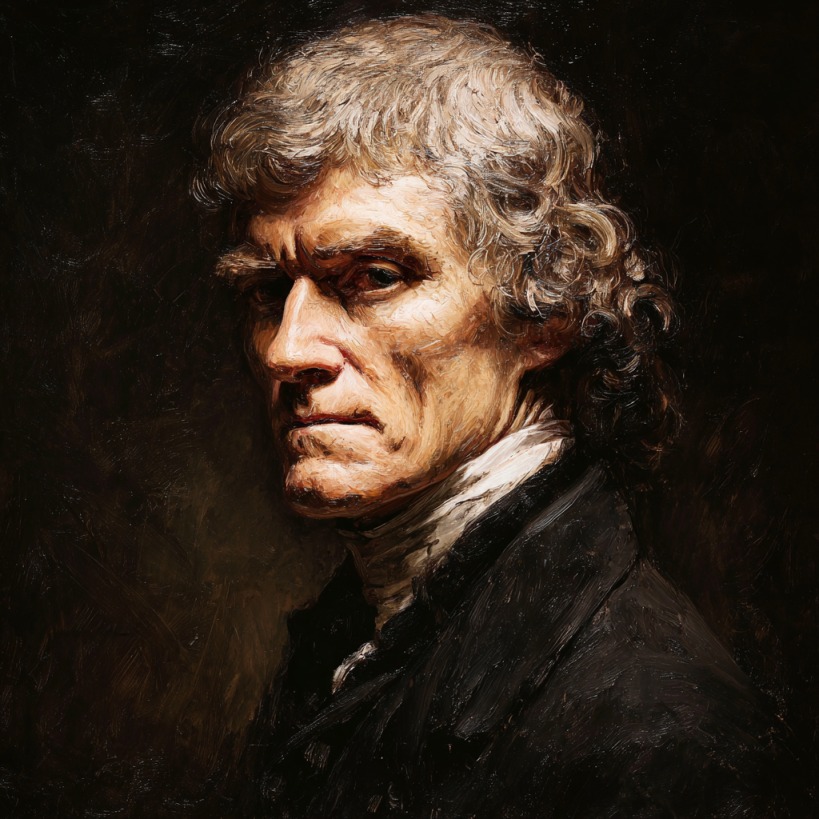
In 1774, Thomas Jefferson purchased the bridge and surrounding land from King George III.
He described it as “the most sublime of nature’s works” and envisioned its preservation for public enjoyment.
Although his dream of a national park did not materialize in his lifetime, his ownership and advocacy for its protection ensured it remained in the American imagination.
- Purchased the property in 1774
- Intended it to serve as a public space for all to enjoy
- Advocated for preservation decades before conservation became widespread
Romanticism and the Sublime
By the late 18th century, Natural Bridge attracted philosophers, poets, and artists inspired by the concept of the Sublime. Visitors often spoke of the overwhelming scale and majesty of the arch, which evoked emotions ranging from awe to spiritual reflection.
Influenced by Edmund Burke’s theories, many believed such natural spectacles stirred the deepest levels of human feeling.
Painters worked to capture the changing light across the limestone span, while poets described the humbling effect of standing beneath it.
Travel diaries recorded long pauses in speech and moments of personal contemplation in the shadow of its arch.
- Impressive vertical scale that dwarfs human presence
- Varying moods created by sunlight and shadow throughout the day
- Serene sounds of Cedar Creek flowing below
- Combination of power and tranquility in a single setting
Writers and artists turned these impressions into works that traveled across the country and even overseas, drawing more visitors to witness the bridge in person.
Natural Bridge as a 19th-Century Icon
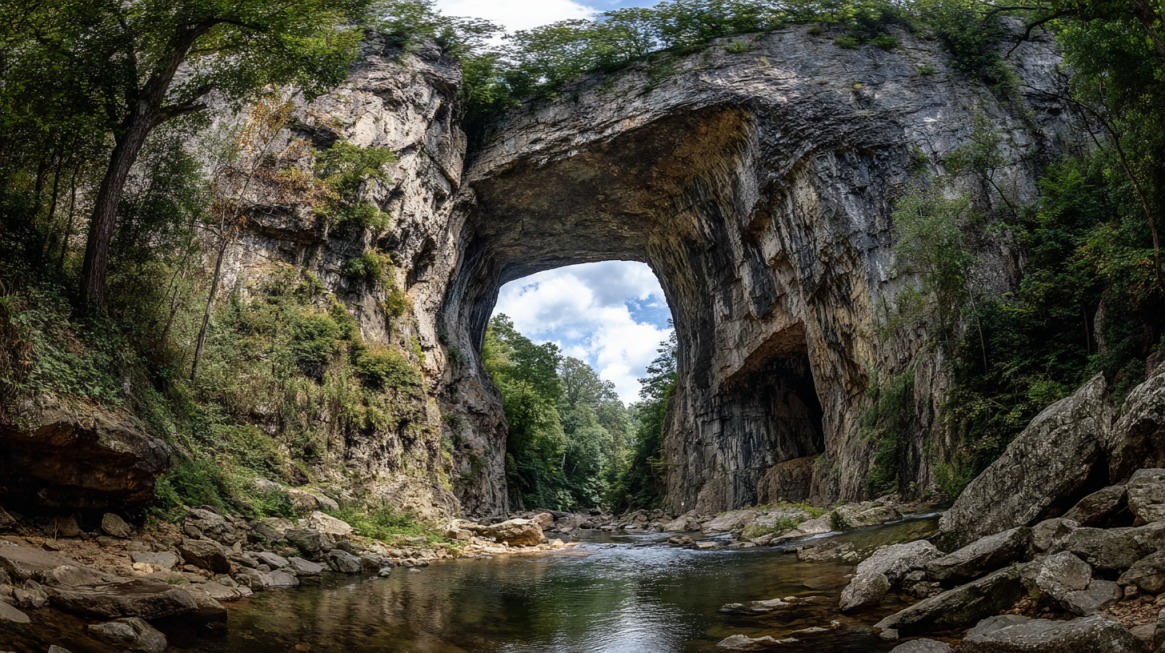
During the 1800s, Natural Bridge reached a height of fame as one of America’s must-see natural wonders. Travel literature frequently compared it to Niagara Falls in terms of grandeur and national pride.
Its image found its way into paintings, engravings, and even the pages of Herman Melville’s Moby Dick.
Tourism expanded rapidly during this time. Visitors arrived first by carriage and later via railroads that brought easier access. Local entrepreneurs promoted the site, offering guided tours and selling prints and souvenirs.
- Recognized as a contender for the “8th Wonder of the World”
- Featured in major works of American literature and art
- Served as inspiration for landscape painters and travel writers
- Became a central stop on Virginia’s tourism routes
Its cultural presence during this period helped shape America’s developing identity as a land of remarkable natural features.
Decline and Rediscovery
By the late 19th century, attention shifted westward as new national parks in places like Yellowstone and Yosemite captured public interest.
Natural Bridge experienced a decline in visitors and publicity, slipping from the forefront of travel itineraries.
A revival emerged once the railroad extended service closer to the site. Renewed accessibility encouraged tourism, while artists and writers once again championed its beauty and history.
Regional campaigns emphasized its historic ties, indigenous heritage, and artistic value, helping restore its position as a sought-after destination.
- Decline in popularity during the rise of western attractions
- Rejuvenation through improved rail access
- Promotion by artists and tourism advocates
- Official transfer to Virginia’s state park system in 2016
@kim.hiked.itCheck out Natural Bridge State Park in Virginia. 📌Be sure to save this for your next adventure in Virginia. The details: 🚗Park in the large lot at the Visitor Center. 💲Pay the admission fee at the Trail Store before beginning your hike. $9/person 13+, $6/person 6-12, under 6 FREE (or purchase an annual Virginia State Parks pass) 🥾Take the Cedar Creek Trail to view the bridge. 2 mi, easy, out and back 🌳10 miles of trails in the park ⏰Park is open daily 8 am-dusk, Visitor Center 10 am-6 pm Please note: There are 137 steps from the Visitor Center to the trailhead. Contact the rangers at the Visitor Center if accommodations are needed. ‼️Be sure to pack out what you pack in and Leave No Trace‼️ Is Natural Bridge State Park on your adventure bucket list? ✅♬ original sound – Kim
That final transfer fulfilled Jefferson’s long-held hope for the bridge to be preserved as a public treasure, securing its place for future generations.
The Bottom Line
Natural Bridge embodies layers of geological time, indigenous heritage, and American history.
It connects the spiritual traditions of the Monacan tribe with the ambitions of the nation’s founders and the inspiration of artists across centuries.
As a preserved treasure within Natural Bridge State Park, it continues to inspire awe, curiosity, and respect for the enduring relationship between people and the natural world.
Related Posts:
- How Was the Chesapeake Bay Bridge-Tunnel Built?
- Chincoteague Pony – History and What Makes the Breed Unique
- How Has Virginia Beach Changed Over the Years?
- 12 Must-Visit Attractions in Virginia Beach in 2024
- Virginia Beach vs. Myrtle Beach - What Are the Main…
- 10 Free Things to Do in Virginia Beach This Summer


